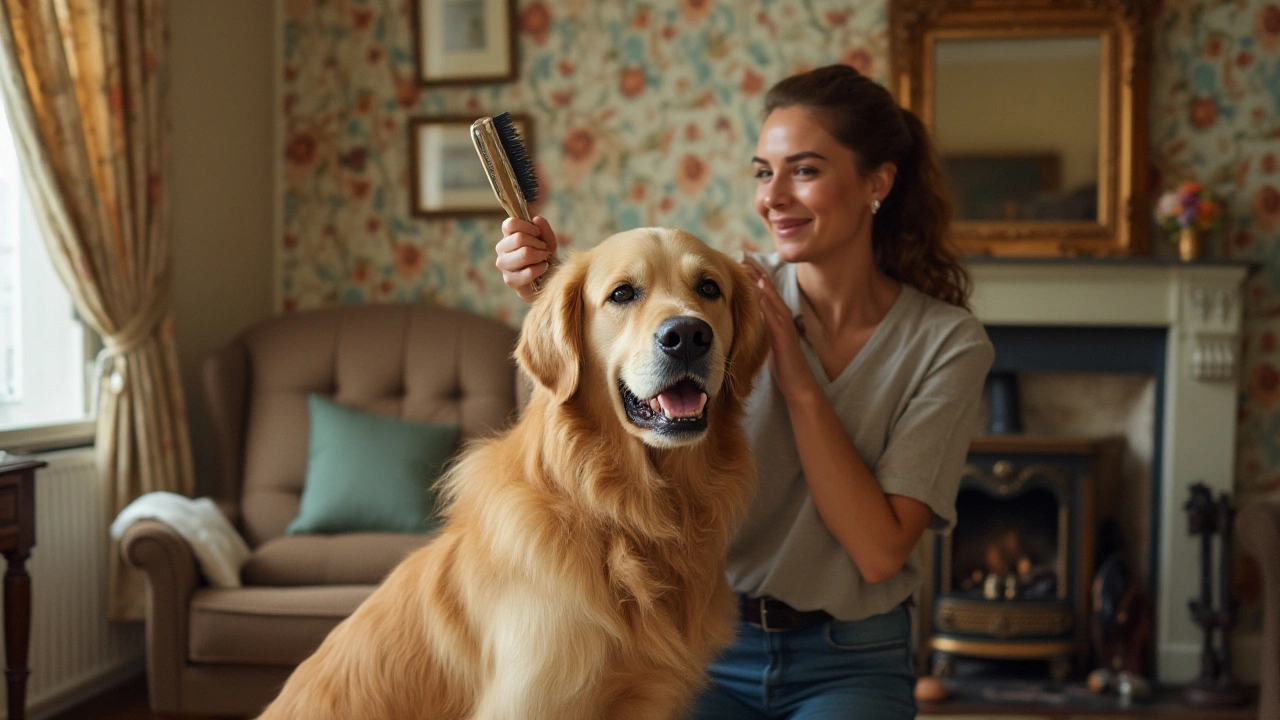Pet Groomer Essentials: Keep Your Dog Clean and Comfortable
Grooming isn’t just about looking good – it’s a big part of your dog’s health. A well‑groomed dog is less likely to get skin problems, matting, or painful knots. Below you’ll find simple steps you can do every day, plus clear signs that it’s time to book a professional.
Everyday Grooming at Home
Start with a quick brush before you head out the door. A soft‑bristle brush works for most coats, while a slicker brush helps with longer hairs. Brush in the direction of growth, then give a gentle rub against the grain to loosen loose fur. This short routine removes dirt, reduces shedding, and lets you spot ticks or skin irritation early.
Check ears while you brush. Look for redness, a strong smell, or dark wax. A cotton ball dampened with a vet‑approved cleaner can wipe away excess wax, but never push anything deep into the canal.
Teeth don’t need a full cleaning every day, but a quick swipe with a dog‑safe toothpaste and finger brush can slow down plaque. If you notice bad breath or stained teeth, schedule a dental check‑up.
Baths are tempting, but over‑bathing strips natural oils. Aim for a bath every 4‑6 weeks unless your dog gets especially dirty. Use a gentle, pH‑balanced dog shampoo and rinse thoroughly. After the bath, towel dry or use a low‑heat dryer on a gentle setting – high heat can dry out skin.
Trim nails when you hear them clicking on hard floors. If you can hear the nail tip, it’s probably too long. A quick clip with a nail trimmer, followed by a styptic powder for any accidental cuts, keeps paws comfortable.
When to Visit a Professional Groomer
Some coats need tools the average owner doesn’t have. Think of double‑coat breeds like Border Collies or Poodles – they need a hand‑strip or a precise clip to stay tidy. If you see mats that won’t come out with a brush, it’s time for a pro.
Skin problems are another red flag. Persistent hot spots, flaky skin, or a rash that doesn’t improve after a basic clean could be an infection or allergy. A groomer can perform a deeper clean and alert you to see a vet.
Dental health benefits from a professional cleaning too. If you notice tartar buildup despite daily brushing, a groomer with dental tools can give a more thorough scrape.
Special occasions – like a show, wedding, or family photo – often need a specific cut or style. Groomers have the skill to shape hair precisely, match show standards, and use finishing sprays for a polished look.
Finally, trust your gut. If grooming feels stressful for you or your dog, a professional can make the experience smoother and keep both of you calm.
Remember, regular grooming is an ongoing partnership between you, your dog, and occasionally a professional. Keep the routine short, stay consistent, and watch your dog thrive. A clean, comfortable pup is a happy pup – and that makes life better for everyone.
- Morgan Ainsworth
- 0 Comments
Understanding the Drawbacks of Dog Grooming Services
Dog grooming is essential for maintaining a pet's hygiene and appearance. However, there are certain disadvantages associated with using professional grooming services. These include cost considerations, potential stress for pets, and the risk of inexperienced groomers causing injury. Pet owners should weigh these factors before deciding on grooming options. Understanding the downsides helps in making informed decisions for their furry friends.
View More
